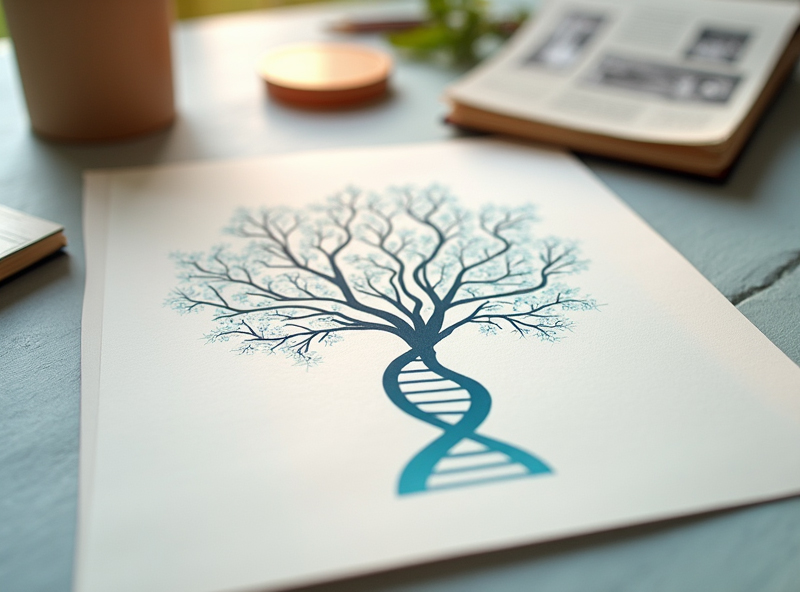DNA testing has changed genealogy in the latest times, now permitting people the power to find family roots previously unconceivable. DNA testing has followed ancestors hundreds of years back, confirming stories passed down in the family and even finding new cousins. With this high variety of tests and companies that operate in this field, it might be a little tricky on where to even begin.
This guide will lead you through the principles of DNA testing for genealogy, explaining how it works and what you might find in your results. Knowledge of genetic genealogy can add a whole new dimension to your genealogical journey, regardless of your experience or the depth to which you want to explore the lineage of your family.
How DNA Testing for Genealogy Works
Basically, DNA testing for genealogy surveys the genetic material that you inherit from your ancestors. A person’s DNA is a unique combination received from both parents; traces of heritage are also included. DNA testing identifies markers that exist in your genetic code and can show you clues toward your ethnic background and identifying relatives who share a small part of your DNA.
There are three types of DNA tests that can be used in genealogy, which include the following:
- Autosomal DNA testing: It’s usually the most common type of test and examines all your genome. It is applicable when you want to find the matches with people who are more distantly related along all branches of your family tree. This may also help identify relatives up to five or six generations back. Most companies offer them and include AncestryDNA and 23andMe.
- Y-DNA testing: This test follows the direct paternal line, since Y-DNA is only passed from fathers to sons. It can be useful in exploring your paternal lineage and confirming connections up and down your father’s side of the family tree. Keep in mind that only males can take a Y-DNA test, but females can benefit by having a close male relative tested.
- mtDNA (mitochondrial DNA) testing: This test follows the maternal line because mtDNA gets passed down from mother to child. The mtDNA test is available to both males and females and allows direct maternal ancestry tracing.
Selecting a Suitable DNA Test
Your research goals should help you decide on choosing a DNA test for genealogy. Here is a brief overview of the appropriate uses of the tests:
- Autosomal DNA testing: This test is ideal for building out your family tree or connecting with your living relatives, and it will match relatives from the maternal and paternal lines. These tests are also useful for ethnic and regional origins research as well.
- Y-DNA testing: It is what you should use if you are looking to dig into and trace your paternal lineage. It is particularly well-suited for research into one’s direct line of male ancestry and for surname studies.
- mtDNA testing: Use this test if you want to trace your maternal line. It is recommended if you are looking to explore your deep ancestry on your mother’s side and, in fact, could give you insight into your maternal heritage thousands of years ago.
The first thing that most people do is an autosomal test: it’s the biggest segment and likely to be the most full-scale, possibly showing you ancestry as well as potential family matches. For example, if you want to know specifically about your father’s side or your mother’s side, these Y-DNA and mtDNA tests can make it a bit more precise.
What DNA Results Can Reveal
You are going to receive vast amounts of information and learn some new things about your family that you never knew about when you get your DNA results. Some of the major points you are going to learn from DNA include the following:
- Ethnicity estimate: One of the biggest features of DNA testing is the ethnicity estimate, breaking down your genetic heritage by region. Suppose your results say you are 40% Irish, 30% Eastern Europe, and 20% Scandinavian. These will be the broadest estimates of where your ancestors came from, although the accuracy all depends on what reference populations that company used.
- DNA matches: The list of DNA matches is also very useful because it lets you reach out to relatives who have taken the same test. You may find cousins even further removed, such as fourth and fifth cousins, or you may find close cousins. Your shared DNA will help you figure out how you’re connected and maybe even find some new branches on your family tree.
- Haplogroups: You would get your haplogroup upon taking a Y-DNA or an mtDNA test. A haplogroup is a collection of individuals that belong to a common ancestor either on the paternal or maternal line. This would have given you a sense of the ancient migration of your predecessors and how your paternal or maternal lineage migrated over time.
- Health and trait reports: Many DNA testing services offer extra information on hereditary features and health issues. Though these do not have much to do with genealogy, it is cool to get interesting information about your hereditary predispositions, such as being able to taste bitterness in certain foods or your eye color.

Using DNA Results in Genealogy Research
Not only are DNA results fascinating on their own, but they also supply useful resources in the tracking and growing of your family tree. Here are several ways you may be able to apply your DNA results to your genealogical study:
- Confirmation of relationships: DNA testing is a great way to confirm existing relationships on your family tree. With DNA testing you may have found that distant cousin with records; but it shows you are indeed related.
- Break through brick walls: One of the most exciting applications of DNA testing is to help break through some of those genealogy “brick walls.” So, if you’ve been stumped over an elusive ancestor, that match may well be your salvation. Perhaps you’ll find a shared match with somebody else and discover you both share a previously unknown-to-you common ancestor.
- DNA matches will trail back into your family tree to cousins you would never have imagined existed. Once a DNA match is discovered, you can reach out to that person to work together on fleshing out your family tree, sharing documents, or digging up some family stories.
- Trace ancient roots: Haplogroup information from a Y-DNA or mtDNA test traces your deep ancestry. You will see how your ancient ancestors moved around the world over time and can give insight into what early history would have been in the line of your family.
Things to Consider
DNA testing can help learn a lot about your ancestry. But it’s very important that you go in with an open mind while considering the results. Here are a few things that may remind you of:
- Ethnicity estimates are never precise: The science of ethnic estimate determination is always evolving but is never an exact science. Expect that companies give you answers that are a little bit different from each other, and ethnicity estimates are just a rough guide to refer to rather than the final answer.
- Unexpected findings: At times, DNA testing may reveal things you wouldn’t think would ever happen. Suddenly, unknown relatives pop up, or the most unexpected ethnic background is revealed. In all this excitement, some findings might make you feel emotional or even really challenged to deal with at first, so you should prepare for what the results are going to bring.
- Concern about privacy: When you do the DNA test, you are putting out very personal genetic information about yourself. Ensure you read through the terms of privacy of the testing firm you have chosen in order to understand how your data will be used and shared
Conclusion
DNA testing has revolutionized genealogy to a degree that, not very long ago, would have been thought practically impossible. From just getting started on your family tree to want to solve a mystery that’s been with you for years, the results of your DNA tests can serve as background information into your ancestry and point you toward relatives you never knew existed.
With the right DNA test and a little curiosity, you can unlock an even more closely linked ancestry and thus find out how this journey shaped your family’s history.
